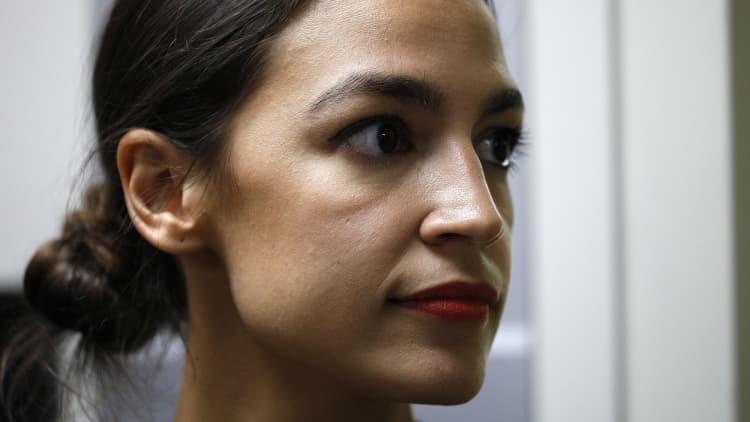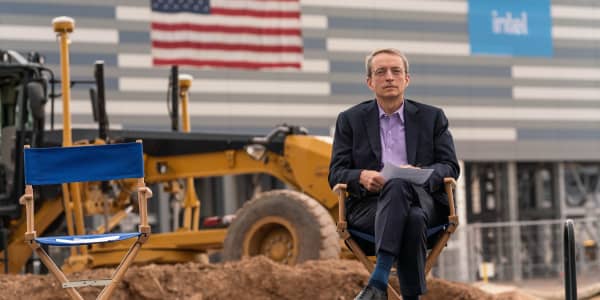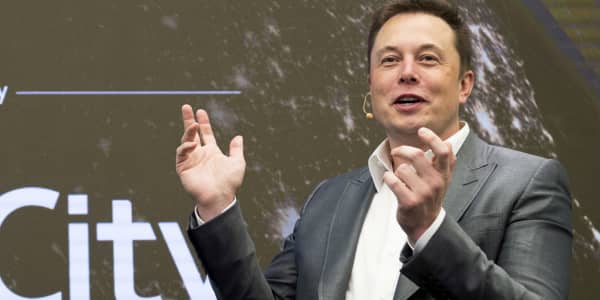Freshman Congress member Alexandria Ocasio-Cortez and veteran lawmaker Sen. Edward Markey are introducing a resolution spelling out congressional support for a Green New Deal — an ambitious plan to remake the U.S. economy and drastically reduce the nation's greenhouse gas emissions.
The resolution largely sticks to a blueprint Ocasio-Cortez laid out when she proposed creating a House select committee to establish a Green New Deal. That framework called for generating 100 percent of the nation's power from renewable sources, making all buildings energy efficient and eliminating carbon dioxide and other greenhouse gas emissions from the transportation sector and industry — all within about 10 years.
The plan also proposes massive investments in research and development to make the U.S. a leader in clean energy technology. In addition, the Green New Deal envisioned by Ocasio-Cortez aims to implement progressive policies such as a federal jobs guarantee, basic income and universal health care.
The resolution being introduced by Ocasio-Cortez and Markey clarifies the scope and scale of the Green New Deal and paves the way for legislation that would lay out explicit projects and policies. Ocasio-Cortez plans to begin crafting that legislation immediately.

The resolution is co-sponsored by 60 members of Congress and nine senators, including 2020 Democratic presidential contenders Cory Booker, Kirsten Gillibrand, Kamala Harris and Elizabeth Warren.
The same day Ocasio and Markey released the resolution, House Speaker Nancy Pelosi announced the Democratic lineup for the House Select Committee on the Climate Crisis. Ocasio-Cortez, who participated in a protest advocating for bold climate action at Pelosi's office in November, is not on the roster.
On Wednesday, Pelosi appeared to cast aspersions on Ocasio-Cortez's plan, saying it is a "suggestion" that the select committee would discuss.
"The green dream or whatever they call it, nobody knows what it is, but they're for it, right?" Pelosi told Politico.
Clarifying Green New Deal goals
The biggest update to the original Green New Deal blueprint is that Ocasio-Cortez is now calling for the U.S. to achieve net-zero greenhouse gas emissions by 2030. Her previous proposal simply called for "eliminating" the emissions from the transportation, agriculture and industrial sectors.
Reaching net-zero emissions typically means the U.S. would still be emitting greenhouse gases, but it would not release more of them into the atmosphere than it can remove or store.
The lawmakers are targeting net-zero status because they are not sure they can entirely cut emissions from sources such as livestock and the aviation industry.
The impetus for the headline goal is the U.N. Intergovernmental Panel on Climate Change's recent warning that "unprecedented changes" are necessary to hold global temperature rise to 1.5 degrees Celsius above pre-industrial levels. The world is on pace to exceed that level as soon as 2030, the Nobel Prize-winning panel composed of climate scientists said.
Energy researchers and policymakers previously told CNBC that trying to achieve the climate goals in 10 years could create unintended consequences that undermine progress towards decarbonization. Some of the revisions released on Thursday appear to acknowledge the potential complications from a rapid energy transition.
Ocasio-Cortez also clarified that under the plan, the U.S. will not invest in new nuclear power plants, but existing generation stations would be allowed to continue operating at the end of the 10-year time frame. Nuclear power plants generate 20 percent of the nation's electric power and 63 percent of its zero-carbon power.
"The goal is to use the expansion of renewable energy sources to fully meet 100% of our nation's power demand through only renewable sources in 10 years, but since no one has yet created a full plan to hit that goal, we are currently unsure if we will be able to decommission every nuclear plant that fast," Ocasio-Cortez's office said in an FAQ.
The lawmakers do not explicitly rule out carbon capture and storage — technology that strips CO2 from emissions and sequesters it underground — but they say their preference is to plant trees and restore ecosystems. CCS technology has not been proven viable at commercial scale.
Ocasio-Cortez and Markey say the Green New Deal will be paid for with federal funds appropriated by Congress, but they do not identify specific mechanisms.
Ocasio-Cortez has previously floated ideas for how to pay for the plan — including imposing a charge on greenhouse gas emissions, tapping the Federal Reserve for credit and establishing a 70 percent marginal tax rate for wealthy Americans.





